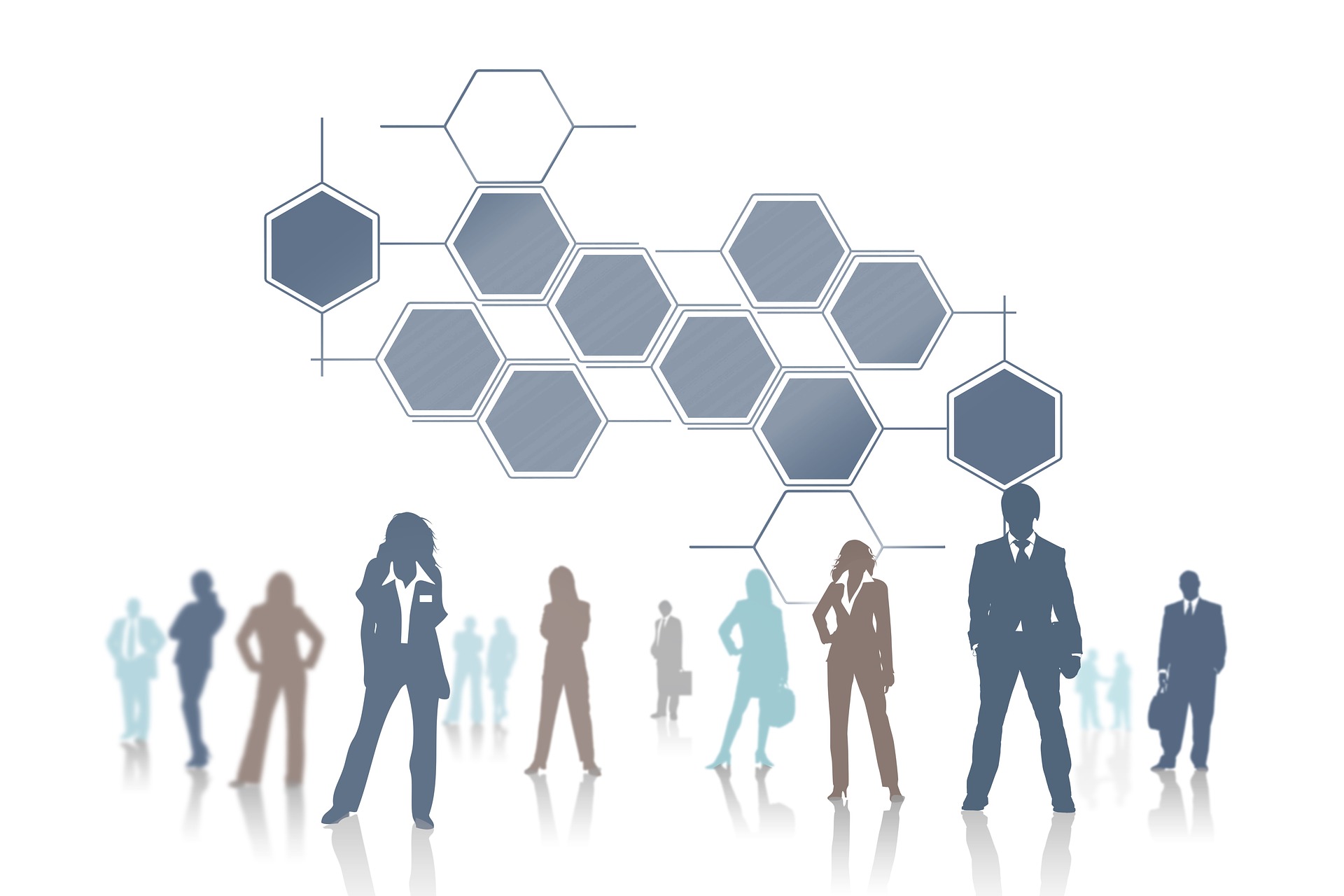- Home
- Business Processes
- Industry Knowledge
- Aerospace Industry
- Automotive Industry
- Banking Domain
- BFSI Industry
- Consumer/ FMCG Industry
- Chemicals Industry
- Engineering & Construction
- Energy Industry
- Education Domain
- Finance Domain
- Hospitality Domain
- Healthcare Industry
- Insurance Domain
- Retail Industry
- Travel and Tourism Domain
- Telecom Industry
- Leadership Skills
- eLearning
- Home
- Functional
- General Ledger (Record to Report)
- Organizational Elements
Organizational Elements
McKinsey 7S Framework is most often used as an organizational analysis tool to assess and monitor changes in the internal situation of an organization. The model is based on the theory that, for an organization to perform well, seven elements need to be aligned and mutually reinforcing.
McKinsey 7S Framework is most often used as an organizational analysis tool to assess and monitor changes in the internal situation of an organization. The model is based on the theory that, for an organization to perform well, following seven elements need to be aligned and mutually reinforcing:
Hard Elements - Hardware of Organizational Success
-
Strategy: The integrated vision and direction of the company
A set of actions that the company starts with and which it must maintain. Strategy is the manner in which the organization derives, articulates, communicates and implements it's vision and direction. Strategy is the purpose of the business and the way the organization seeks to enhance its competitive positioning and competitive advantage.
Strategic thinking involves the understanding of basic economics of business; identifying one’s sources of competitive advantage, and allocating resources to ensure that ones distinctive capabilities remain strong.
-
Structure - The organizational chart of the company
Structure defines how people, tasks, work is organized and represents the way business divisions and units are organized and includes the information of who is accountable to whom. In other words, structure is the organizational chart of the firm. It is also one of the most visible and easy to change elements of the framework. Structure allow the firm to focus on areas that are deemed important for its evolution. This includes division of activities; integration and coordination mechanisms. Functional superiority can only be achieved if there is enough reliability and focus within each business unit.
-
Systems - The decision making procedures of the company
Systems refer to policies and procedures that govern the way in which the organization acts within itself and its external environment. These processes and information flows link the organization together and used by staff to get the work done. This includes computer systems, operational systems, HR systems, etc., which reveal business’ daily activities and how decisions are made. Systems do not only refer to hard copy reports and procedures but also to
informal mechanisms such as meetings and conflict management routines.
Soft Elements - Software of Organizational Success
-
Style - The management style of the company
Style represents the way the company is managed by top-level managers, how they interact, what actions do they take and their symbolic value. How managers behave, leadership style, unwritten norms of behavior and organizational culture etc.
-
Staff - The employees of the company
This element is concerned with how the company develops managers (current and future) and employees. Their selection, training, reward and recognition, retention, motivation and assignment to work etc. Identifying what type and how many employees an organization will need and how they will be recruited, trained and deployed.
-
Shared Values - The key beliefs and aspirations and guiding values of the company
These values define the firm's key beliefs and aspirations that form the core of its corporate culture. These values shapes the organizational culture as the employees share the same goals guiding values. Values act as an organization's conscience, providing guidance in times of crisis and are the foundation of every organization.
Values are intangibles that affects employees (treating them with dignity), customers (treating them with fairness) and society (making a social contribution).
-
Skills - The dominant capabilities of the company
Dominant attributes, competence or capabilities that exist in the organization. It refers to the fact that employees have the skills necessary to execute company’s strategy. Skills enables its employees to achieve its objectives.
Organization is a system of consciously coordinated activities of two or more persons in order to achieve a common goal. As per the model these seven internal aspects of an organization need to be aligned if it is to be successful. The 7Ss framework provides a useful framework for analyzing the strategic attributes of an organization. Whatever the type of change – restructuring, new processes, organizational merger, new systems, change of leadership, and so on – the model can be used to understand how the organizational elements are interrelated, and to ensure that the wider impact of changes made in one area is taken into consideration. The model can be applied to many situations and is a valuable tool when organizational design is at question.
The most common uses of the framework are:
- To facilitate organizational change
- To help implement new strategy
- To identify how each area may change in a future
- To facilitate the merger of organizations
Organizational structure aligns and relates parts of an organization, so it can achieve its maximum performance.
Organizational structure sets out who does what within a company and specifies who answers to whom.
A strategic, carefully planned organizational structure helps a business run effectively and efficiently.
It helps determine how your products are produced, distributed, marketed and sold.
Structure is also dependent on your company’s unique mission and goals.
Regardless of the type of structure you choose, you’ll find key elements that they all have in common.
One of the most important components of your organizational structure is defining who’s in charge.
It’s important that you have a clear defined chain of command.
How and where your products or services are produced is also considered within your business structure.
An organization’s structure also maps out how products are delivered to customers.
Each of these elements affects how workers engage with each other, management and their jobs in order to achieve the employer’s goals.
Related Links
You May Also Like
-
Driving Business Efficiency through Divisions and Departments
In case of a multi-divisional organizational structure, there is one parent company, or head-office. And that parent owns smaller departments, under the same brand name. Dividing the firm, into several self-contained, autonomous units, provides the optimal level of centralization, in a company.
-
An account inquiry is a review of any type of financial account, whether it be a depository account or a credit account. In this tutorial, you learn what we mean by drill through functionality in the context of the general ledger system. We will explain the concept of drill-down and how it enables users to perform account and transaction inquiry at a granular level and the benefits of using this functionality.
-
This article explains the process of entering and importing general ledger journals in automated accounting systems. Learn about the basic validations that must happen before the accounting data can be imported from any internal or external sub-system to the general ledger. Finally, understand what we mean by importing in detail or in summary.
-
As the business grows, the company may want to transition to a branch structure as branches are allowed to conduct a much broader range of activity than representative offices. Branches can buy and sell goods, sign contracts, build things, render services, and generally everything that a regular business can do. A company expands its business by opening up its branch offices in various parts of the country as well as in other countries.
-
Divisional Organizational Structures
The divisional structure or product structure consists of self-contained divisions. A division is a collection of functions which produce a product. It also utilizes a plan to compete and operate as a separate business or profit center. Divisional structure is based on external or internal parameters like product /customer segment/ geographical location etc.
-
Understand what we mean by GAAP to STAT adjustments. This article discusses the different standards that are used for multiple representations of the financial results for global organizations. Understand the meaning of US GAAP, Local GAAP, STAT, IFRS, and STAT. Finally, understand why accounting differences arise and how they are adjusted for different financial representations.
-
In this article, we explain some commonly used subsidiary ledgers like accounts receivable subsidiary ledger, accounts payable subsidiary ledger or creditors' subsidiary ledger, inventory subsidiary ledger, fixed assets subsidiary ledger, projects subsidiary ledger, work in progress subsidiary ledger, and cash receipts or payments subsidiary ledger.
-
Generally Accepted Accounting Principles define the accounting procedures, and understanding them is essential to producing accurate and meaningful records. In this article we emphasize on accounting principles and concepts so that the learner can understand the “why” of accounting which will help you gain an understanding of the full significance of accounting.
-
Operational Structures in Business
Large organizations grow through subsidiaries, joint ventures, multiple divisions and departments along with mergers and acquisitions. Leaders of these organizations typically want to analyze the business based on operational structures such as industries, functions, consumers, or product lines.
-
Business Metrics for Management Reporting
Business metric is a quantifiable measure of an organization's behavior, activities, and performance used to access the status of the targeted business process. Traditionally many metrics were finance based, inwardly focusing on the performance of the organization. Businesses can use various metrics available to monitor, evaluate, and improve their performance across any of the focus areas like sales, sourcing, IT or operations.
Explore Our Free Training Articles or
Sign Up to Start With Our eLearning Courses

About Us
Learning
© 2023 TechnoFunc, All Rights Reserved











